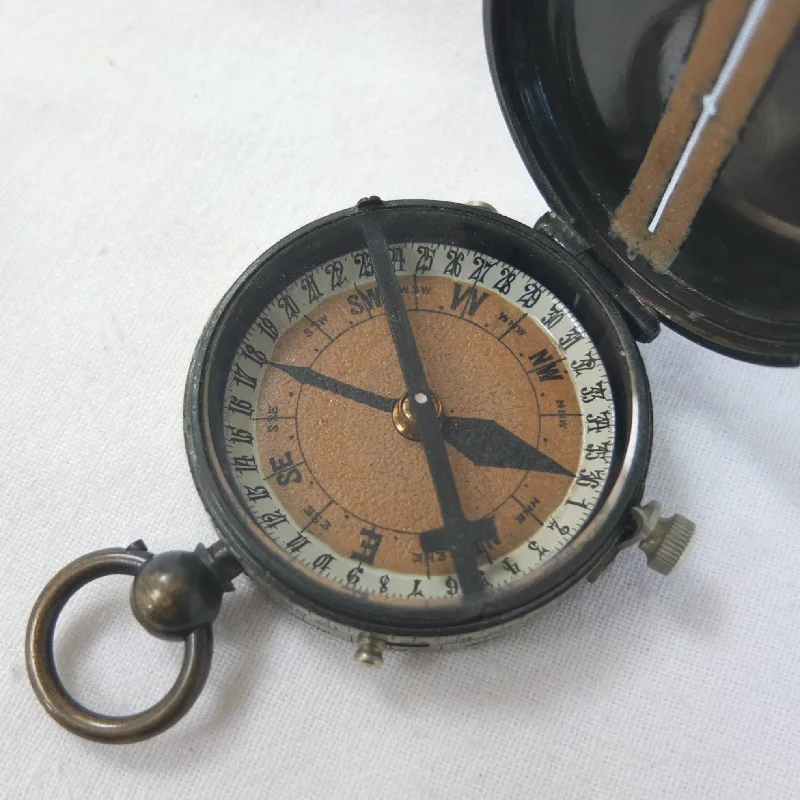A rare Major Verner's Patent marching compass, serial number 412, made by J. H. Steward c.1895. The compass has a brass case, marked with J. H. Steward's details, '406 & 457, Strand, London', 'Major W. Verner's Patent', and the serial number 412. It features a hand-painted compass card with a a large black North marker, and a central painted area (possibly 'Balmain's Luminous Paint', which was patented by William Balmain in 1877). This type of luminous paint was activated by exposure to very bright light, often created by burning a strip of magnesium ribbon. The rotating bezel has an integral direction bar fixed to the underside of the glass. The compass also has a transit lock operated by a sliding button, and another small button on the side of the case operates a manual brake. The lid retains much of its original bronzed finish.
This compass is identical to one (serial no. 711) carried by Lieutenant C. J. Clerk during the famous charge of the 21st Lancers at the Battle of Omdurman in September 1898 (see the blog pages for further details of this compass). Another example of the Verner patent marching compass can be seen at . The compass was listed in several J. H. Steward Military Instrument catalogues from 1893 to 1899, and also appeared in Verner's book Military Topography (1891).
J. H. Steward Ltd: James Henry Steward (1817-1896) established his business in London in 1852 as a maker and retailer of optical, scientific, military and surveying instruments. J.H. Steward was the head optician of the company and had businesses at 406 Strand, 457 West Strand and 54 Cornhill in London. In the mid 1800s he became the optician to Her Majesty's Government and the National Rifle, and National Artillery Associations. James Henry Steward died in 1896. J. H. Steward Ltd was incorporated in 1912 and continued in business in London until 1973. The main London office was sold in 1971, and from 1971-1973 the company rented premises in Catherine Street. All the remaining stock and long serving staff member George Goble (c.1916-1975) were moved to Catherine Street. The business finally moved to 154a Church Road, Hove, Sussex in 1973, before finally ceasing trading in 1975.
Lt-Colonel William Willoughby Cole Verner (1852-1922) served on the staff in the Egyptian campaign of 1884-85 and during the Boer War. He retired as a Lt-Colonel in May 1904. The earliest Verner designs were simple pocket compasses, with the various models of the Service Pattern, MK III to MK VII, appearing between c.1895-1918. His prismatic service compasses were essentially a development of the Schmalcalder patent design of the early 19th century, but they remained the standard service compass of the British Army until the start of WW2. As well as designing compasses, Verner was a prolific author, military historian, and chronicler of the Rifle Brigade.
Condition:
In very good original condition, full working order, and finds North well. The compass case, card, and glass are all in very good condition.
Dimensions : 55mm (75mm inc. loop)

